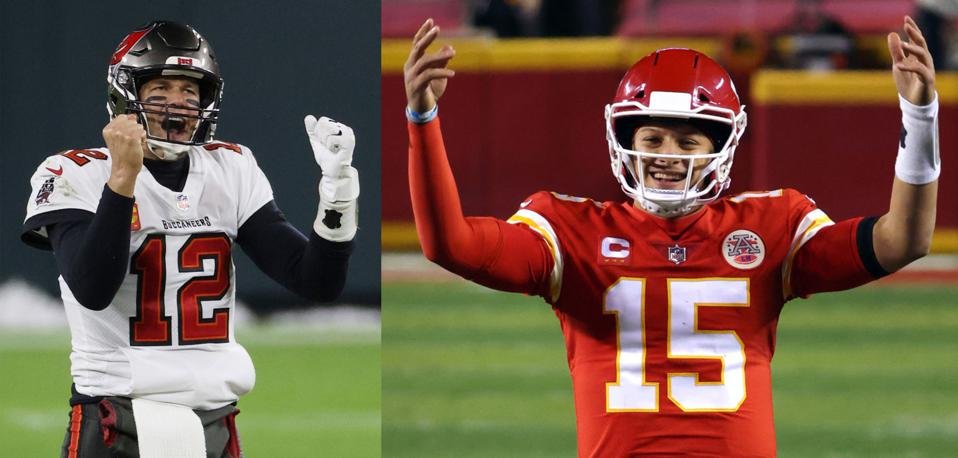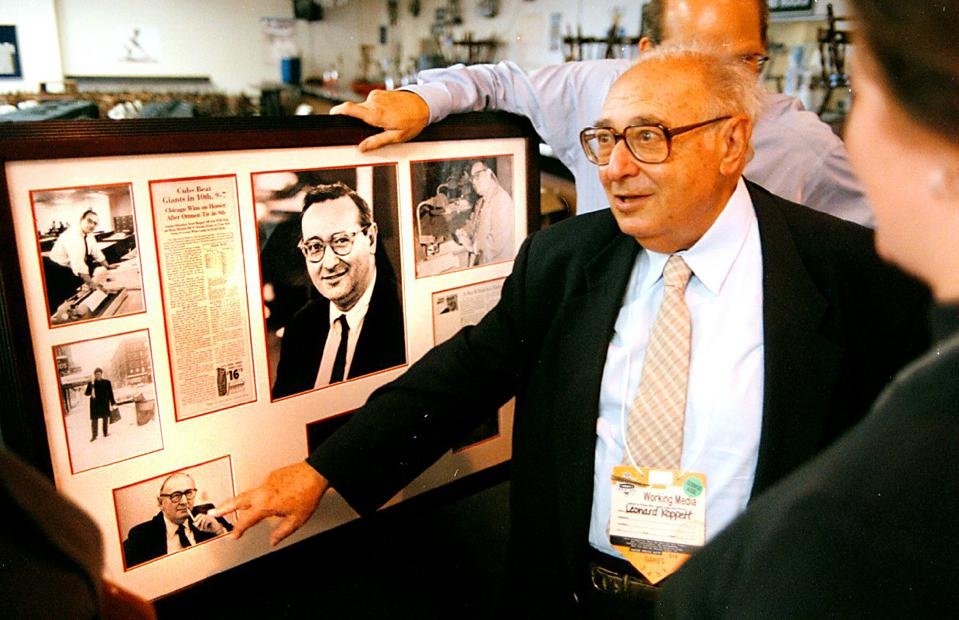
Bullish on Brady: If the Buccaneers win Super Bowl LV, the SBI says the stock market should gain in 2021.
Getty Images
For more than 50 years, the Super Bowl Indicator has been the Groundhog Day of sports prognostication. If you believe that a large rodent can foretell the end of winter, then why not accept that the winner of the Super Bowl correctly predicts the stock market performance of the coming year? Foolish? Not as much as you think—the Indicator has been accurate 74% of the time, or 40 of the past 54 years. Those are higher odds than you can get betting on the coin toss.
The principle behind the Super Bowl Indicator is simple: If the NFC defeats the AFC in the Super Bowl, the market will be higher over the coming year. (Meaning if Tom Brady and the Tampa Bay Buccaneers can upset the slightly favored Patrick Mahomes and the Kansas City Chiefs, expect a bull market.) There’s one notable exception, however—AFC teams such the Pittsburgh Steelers, one of the original NFL clubs before the two leagues merged in 1970, are counted as an NFC team.
The theory was first identified in 1978 by the late New York Times sports reporter Leonard Koppett, who understood that the correlation between the winner of the Super Bowl and stock market performance meant “absolutely nothing.” He excused the Super Bowl Indicator’s adoption and persistence in mainstream culture as an “embarrassment to rational thought.” And by 2001, during a multi-year losing streak, Koppett declared it was “dead as a doornail.”

SBI MVP: Legendary sportswriter Leonard Koppett first discovered the correlation between the Super Bowl winner and the stock market performance in the late 1970s—which he knew meant “absolutely nothing.”
MediaNews Group via Getty Images
But investors and gamblers missed that memo. Among those who picked up the mantle Koppett never wanted was Robert Stovall, a veteran Wall Street analyst and strategic investor. After Koppett’s death in 2003, Stovall became the custodian of the Super Bowl Indicator, often writing about its accuracy with a wink and a nod in investment articles.
Then in 2015, when he turned 90, Stovall passed it off to his son, Sam, the chief investment strategist at CFRA Research. The younger Stovall, who refers to himself as the “keeper of the superstition,” now dutifully records the outcome of the Super Bowl and the market’s performance 12 months later in a master Excel spreadsheet. He crunches the numbers and updates the Super Bowl Indicator’s odds.
Super Bowl Indicator (1967-1980): Winning Beginnings
To be clear, Stovall does not take the theory seriously.
“I don’t think anyone in their right mind would use the Super Bowl Indicator to initiate an investment,” he says.
Besides the junk math, the SBI is also on a five-year losing streak. So if the Indicator has been wrong since 2015—is the theory dead?

Keepers of the Fame: “It doesn’t pay to be a bear,” the late SBI custodian Robert Stovall taught his son, Sam.
COURTESY OF SAM STOVALL
“Well, what it means,” Sam Stovall says, “is that it’s a perfect example of correlation without causation.”
He says while there is no science behind the SBI, Stovall’s father always told him that “it doesn’t pay to be a bear.” Americans are optimistic by nature, Robert Stovall told his son, and if an analyst is bearish and wrong, they’re ridiculed. If they’re bearish and right, they’re hated. In other words, Stovall is rooting for Tom Brady and the Buccaneers, an NFC team, this year.
“I’m a believer of reversion to the mean,” he says. “The minute you give up on a time-tested strategy is the day it’ll start all over working again.”
Super Bowl Indicator (1981-2000): The Dynasty Years
Of course, sports gamblers aren’t necessarily investors and the Super Bowl, of course, is one of the biggest workdays of the year. Bettors wagered an estimated $6.8 billion on Super Bowl LIV, when the San Francisco 49ers lost to the Kansas City Chiefs, according to the American Gaming Association. Still, you’d be hard pressed to find a gambler who takes the SBI seriously.
Professional sports bettor Rufus Peabody says the Super Bowl Indicator reminds him of the Redskins Rule. The theory goes like this: if the Washington Football Team (formerly the Redskins) win their last home game, the incumbent wins the presidency. From 1940 to 2000, the coincidence panned out perfectly. However, starting in 2004 the theory inverted and now if Washington wins their last home game, the challenger is supposed to win. (This inversion has worked with Obama, Trump and Biden.)
“This shows if you’re searching for relationships, you’ll find them,” says Peabody. “But it doesn’t mean it’s valuable—it’s worth absolutely nothing. The Redskin Rule, the Super Bowl Indicator concern two things that are unrelated. There is no mechanism where one thing effects the other.”
As a professional gambler, Peabody says it’s easy to be fooled by randomness. “People are inclined to see patterns when no exist,” he says.
Super Bowl Indicator (2001-2020): Better Luck Next Year
Pattern recognition is exactly why most people do not get better at gambling, adds Ed Miller, a former poker player who founded his own company that sells odds to sportsbooks. Instead of focusing on the fundamentals of a game like poker, gamblers can get caught up with superstitions or signals that have no connection to the outcome.
Miller says that while no professional gambler should, or would, pay attention to something as silly as the Super Bowl Indicator, he remains open minded around angles.
“I’ve seen things in sports betting that I initially said no way,” says Miller. “Whenever someone brings an angle to me, I don’t judge right away.”
And Sam Stovall is clearly in on his own joke. He says he likes to promote the SBI—as he did in a February 1 investment memo—to show that Wall Street can have a sense of humor. But, deep down, carrying on the Super Bowl Indicator is a form of remembering his father, who passed away in December at 95 years old.
“I keep tabs on the Super Bowl theory simply because it’s good to keep my father’s legacy alive,” says Stovall. “I’m doing it for him. Otherwise, why bother keeping tabs on an indicator that has no causation and hasn’t worked in the last five years?”























